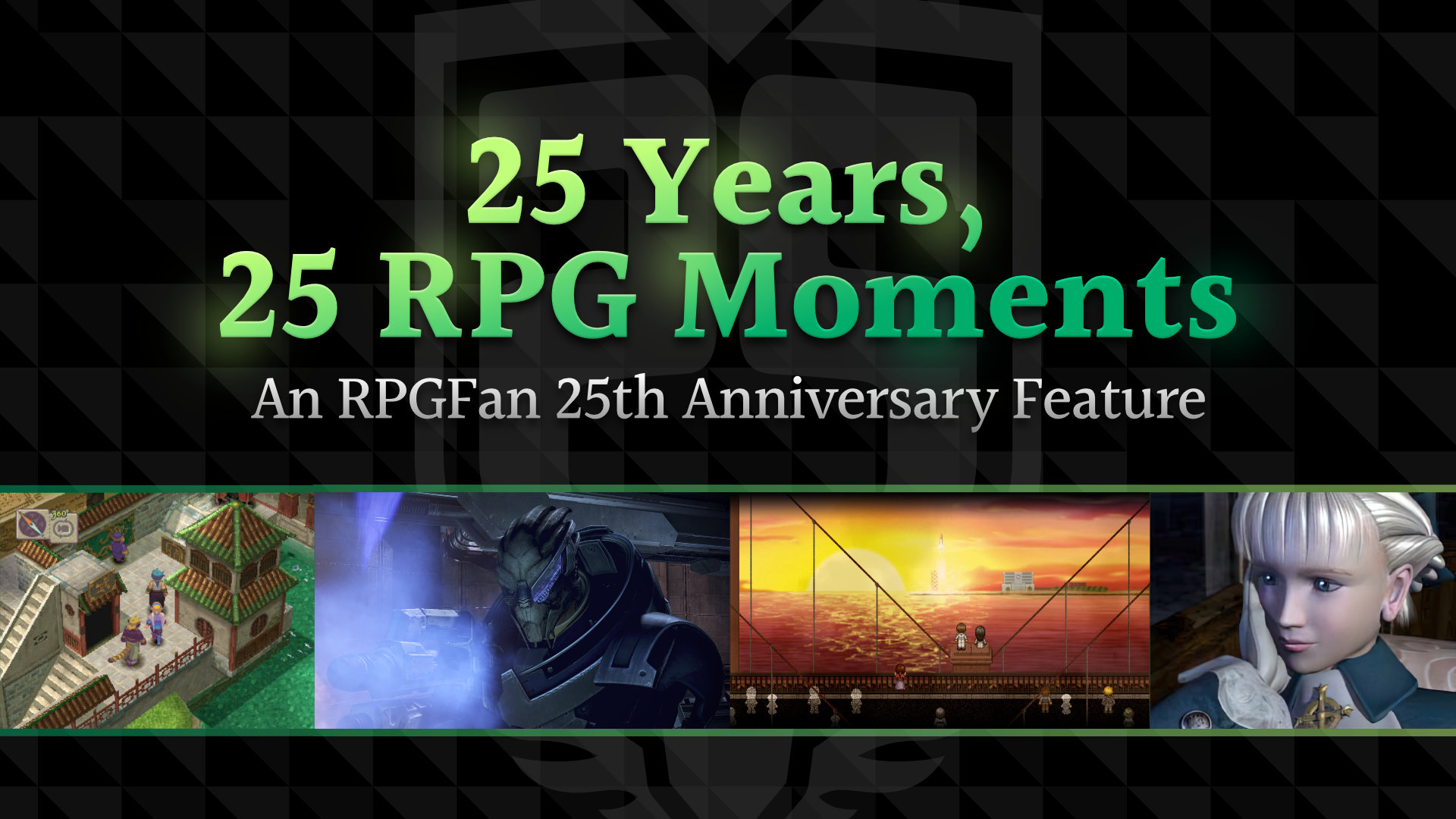Get this, folks: RPGFan is in its 25th year as a website! 25 years of reviews, news, features, and all kinds of other RPG coverage. As a person who has been following the site almost since the beginning it both blows my mind and makes me feel very, very old.
So, we’ll be bringing you a sequence of features in honor of this momentous occasion. First up, we gathered together 25 of our writers to talk about our favorite RPG moments over the last 25 years. We’ll be talking about the moments that made us laugh, made us cry, and made us throw the controller across the room.
We had so much interest in the feature that I didn’t get to include my own moment, but if you’ve read this feature on NieR: Automata, well, that might tell you what mine is.
What are some of the most important moments in RPGs for you? What did we miss? Be sure to let us know on either Twitter, Facebook, Instagram, Discord, or however you most enjoy interacting with us!
Intro by Zach Wilkerson
SPOILER WARNING: Several of the memories shared here may spoil small or large moments of their respective games, so read beyond the titles at your own risk.
999 – The Safe/Letter Ending
by Patrick Gann
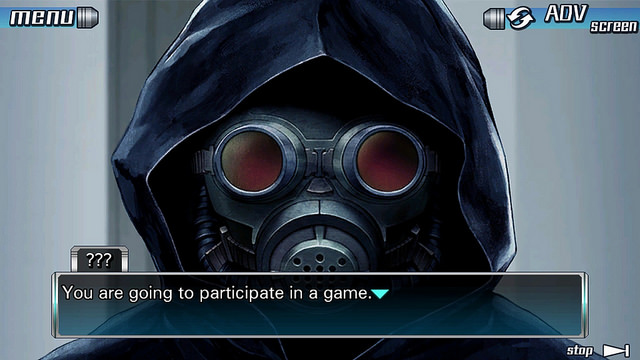
One of the most poignant memories I’ve ever experienced in gaming arose during the puzzle-solving visual novel hybrid 999: Nine Hours, Nine Persons, Nine Doors (the first in the Zero Escape trilogy). Surprisingly, the memory is not related to the game’s true ending, powerful and emotional (and Sudoku-filled) as it was. No, I’m talking about the prerequisite ending, the necessary alternate timeline where you must fail but learn an otherwise impossible-to-know truth to carry over into the timeline where all can be made well again.
This path and process is known as the “safe ending” or the “safe/letter ending,” as it involves protagonist Junpei unlocking a safe and quickly unraveling the deepest secrets of the Nonary Game and the backstories of approximately half of the main cast. While all of these details are intriguing enough to be heralded as a great gaming memory, this moment stands out for me because of the nature of the storytelling from director Kotaro Uchikoshi right here.
Think about this. The mastermind(s) behind the present Nonary Game, the one you (as Junpei) find yourself involved in, use the wild pseudoscientific Morphogenetic Field theory to develop the perfect trap to uncover a hidden truth, bring a half-alive girl back to full life, and get revenge on all the baddies. The only way to make sure everything works out, sadly, is to build in the inevitable contingent path where an unsuspecting player learns the truth at a dead-end, then recalls that truth in another version of events. The player, past the fourth wall, can easily comprehend the information. But the way the player sees Junpei piece it together is fantastic. And that “piecing together” hinges on the safe/letter experience. I’ll never forget it.
Atelier Totori – Getting the True Ending
By Alvin Lim
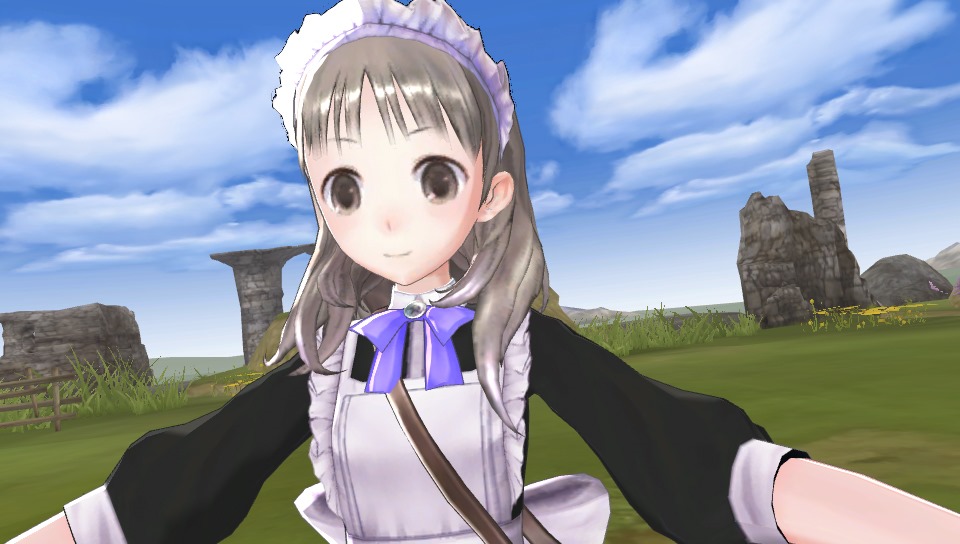
I have been a HUGE Atelier series fan since its debut in the West via Atelier Iris: Eternal Mana in 2005. So naturally, when Atelier Totori: The Adventurer of Arland released in English, I was all over it on day one! Since I earned the Platinum PlayStation trophy for Atelier Rorona, I sure as heck wanted to do the same for Totori! Earning Platinum trophies in Atelier games usually means seeing every ending. The ultimate goal is unlocking the True Ending — earned after triggering requirements for all other endings simultaneously.
I quickly learned that Atelier Totori was much tougher than its predecessor. While Atelier Rorona did have time limits, it was a very rigid and structured game system with set assignments. Totori, however, just gives you a goal and three to five years to do it. While this gives you more freedom, it also means you need to be as efficient as possible when planning your course through the game.
I definitely felt Totori’s struggle to improve herself. She starts out as a very meek, quiet girl who can barely even scratch a Puni! Her main goal in becoming an Alchemist and Adventurer is to find her legendary Adventurer mother, who has been missing for years. After five years of adventuring and synthesizing, Totori becomes one of the toughest Adventurers in all of Arland. In the standard Normal Ending, you learn that Totori’s mom passed away after sealing a powerful monster. While the ending is bittersweet, you do get to avenge Totori’s mother by taking out the demon that killed her.
The True Ending, however, reveals that a particular glasses-wearing lady saved Totori’s mother. I literally wept tears of happiness when I saw the True Ending! While some may consider Totori’s mother being alive after all a cop-out, I certainly appreciated it. The Atelier games are generally happy and idealistic, and that’s exactly how I like it. It felt like the journey and the path to get there was all worth it. It’s difficult to put into words the emotions I felt when I finally got that Platinum trophy, but it cemented Atelier Totori as one of my favorite games ever.
Breath of Fire IV – The Tale of Fou-Lu
by Stephanie Sybydlo
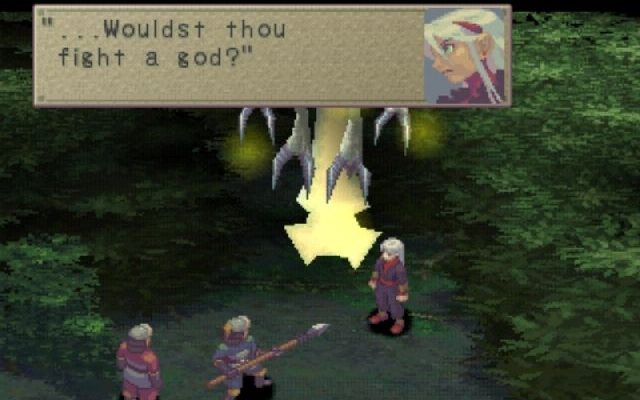
The Breath of Fire series never held back on truly great and tragic storytelling. The first game to make me cry, Breath of Fire II, contains a scene where an unexpected rescuer pushes a party member away from a crushing trap at the last second (if you know, you know). Cue me crying to my mom about a game character who stood no more than 25 pixels tall. It was a moment I couldn’t shake in a series that kept me coming back for that storytelling prowess.
Breath of Fire handles gut-wrenching moments with aplomb, especially with Breath of Fire IV’s Emperor Fou-Lu. The stronger half of a Dragon God, split from main hero Ryu, Fou-Lu plays the part of the secondary protagonist — and eventual antagonist.
While Ryu’s journey is not without tribulation, Fou-Lu is put through the wringer. As the Fou Empire’s founder, he united warring nations into unprecedented prosperity. However, as an “incomplete god,” he falls into a deep sleep to recover and one day resume his role. But the current Emperor isn’t keen on giving up the crown, and Fou-Lu’s people betray him as soldiers pursue to kill. Finding brief respite in a quiet farming village, Fou-Lu meets a young lady named Mami, who nurses his injuries. He helps the villagers deal with monsters as rumors about his relationship with the sweet farm girl spread (and yeah, they totally “seal the deal”). However, when a nosy landlord rats him out to the Empire, Fou-Lu is on the run again, and Mami is captured for conspiring. The Empire resorts to using the Carronade, a powerful cannon explicitly powered by the despair of a relentlessly tortured (human) sacrifice. They fire, and Mami is not seen again.
Devastated but not dead, Fou-Lu is filled with a renewed rage, obliterating all obstacles and indignantly beheading the Emperor. He desires to reunite with Ryu as a complete Yorae Dragon that’ll purge humanity for its constant cruelty.
Breath of Fire IV makes a case for its villain by putting you in his shoes and experiencing the best and worst of humankind. You feel for Fou-Lu and even have the option to “join him” (leading to a bad ending where you fight the party!). These aren’t the only devastating moments in BoF IV, but some of many in a series that’s surprisingly great at delivering deep cuts.
Evergrace – Called Out for my Choices
By Hilary Andreff
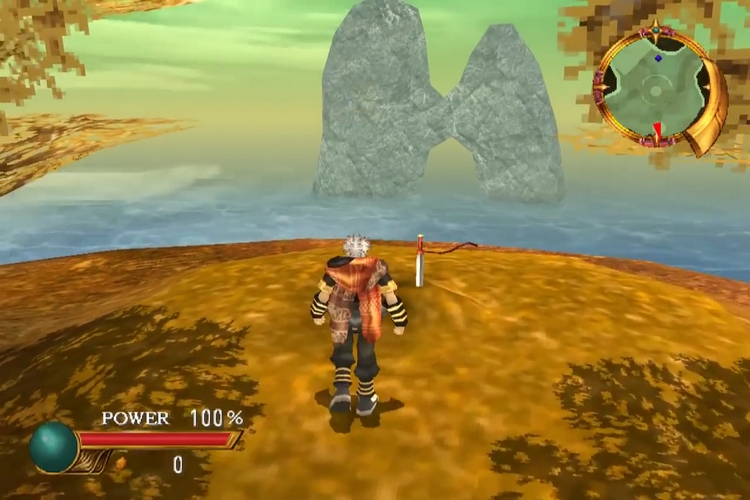
There’s a lot I don’t miss about being a teenager. That stage of life brings an entire set of pressures and expectations that feel pretty much life-or-death until (spoiler alert) you find out they’re not. In hindsight, it’s fascinating to see how this is reflected—how many of my favorite memories from that time are when dear friends and I would sit down with random, or sometimes intentionally bad, games with no expectations other than to react and have fun. It was the Twitch before Twitch, all.
Enter Evergrace in all its PS1/early PS2 glory, complete with chanty, atonal vocals recorded by the composer himself for mastering. This music resulted in one of my best (and still current) friends and I bursting into random impressions of the music at each other for weeks.
We had no idea about the noble destiny in store for FromSoftware. All we knew was there was a human research laboratory (where is an IRB when you need one) that we needed to investigate for some reason, and that we needed to change our armor to look fabulous while doing it. Our playthrough came to a screeching halt when I found what I thought was the coolest RPG shirt I could possibly find. I donned a nice teal chestpiece with dynamic FLAME SLEEVES and open shoulders, only to find a tapir NPC minutes later whose sole purpose is to judge your outfit. He didn’t even tell me I looked extra. He was bored with my getup, and I just couldn’t fathom that. It was time to go play DDR instead.
Fast forward to years later, and this game is still finding ways to exact judgment. On my first extended date with my precious partner, he found my old CD case of games from that era, saw the first page of it with Evergrace and Ephemeral Fantasia, and proclaimed “Well, this is off to a good start…”
Sometimes I love how things come full circle.
Hades – Reuniting Orpheus and Eurydice
By Lucas Greene
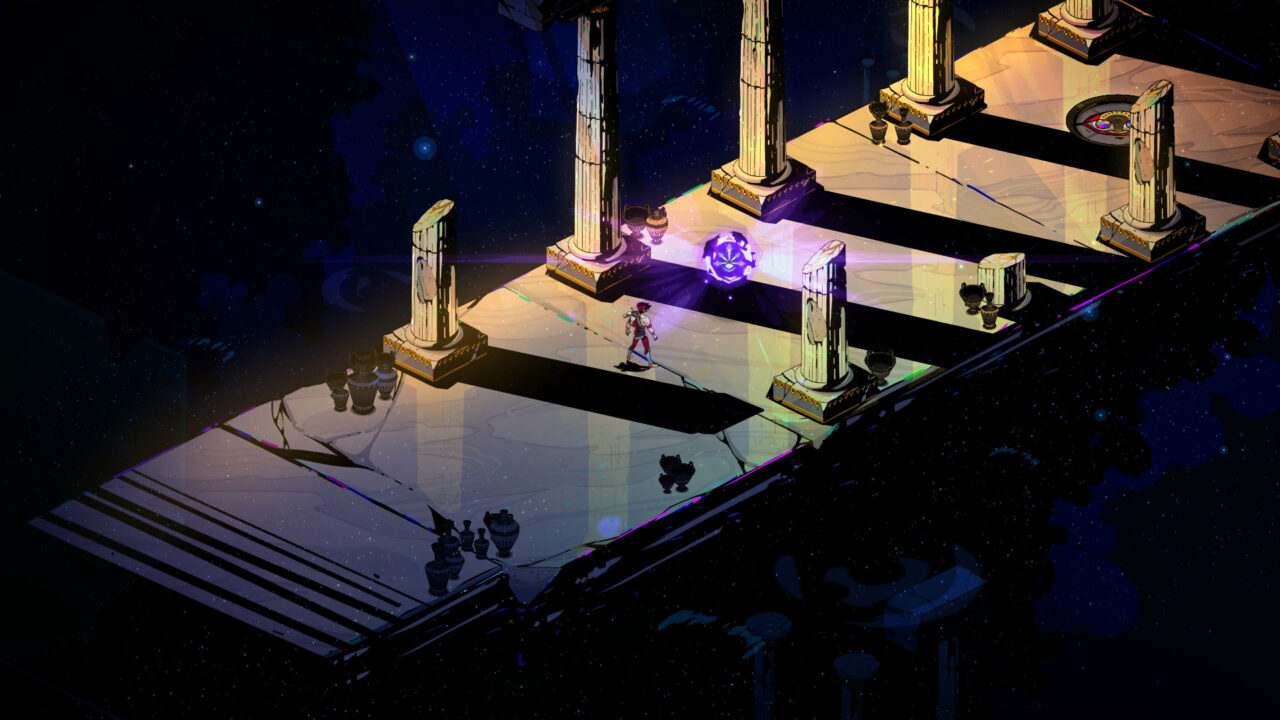
When Hades came out a few years ago, I was pleasantly surprised at how much it drew me in. The gameplay loop was fun, but the creative storytelling and memorable characters kept me coming back. One storyline in particular became a driving goal, and several times during its progress, I stopped to simply take in the music or silence.
When I first met Orpheus, I was slightly put off by his sad-sack demeanor. By contrast, during my first meeting with Eurydice, her vibrant energy took me in as much as her song. As the game progressed and I learned more about them, I became increasingly engaged by their story, exploring not just the myth as presented but the emotional aftermath of that myth. The pain and guilt of Orpheus, as well as his deep love for Eurydice, eventually endeared him to me.
After visiting with them several times, I found Eurydice had stopped singing. During that profound silence, she asked me in an almost accusatory fashion, “What happens now?” It is rare for a game to call you out on your meddling, and while I was already invested, seeing the impact of my actions only reinforced my need to see their story through to completion.
The culmination of their story is almost as understated as it is significant. When you lift his contract, Orpheus appears overcome with emotion and thanks you profoundly, but the real resolution comes the next time you step into Eurydice’s chambers. Even before you see them, you hear “Good Riddance” performed as a duet for the first time. I wasn’t sure what to expect from their reunion, but hearing the two of them singing together after hearing both of them sing that song so many times alone struck me, and all I could do was close my eyes and listen.
Kingdom Hearts III – Reuniting the Wayfinder/Twilight Trios
By Peter Triezenberg
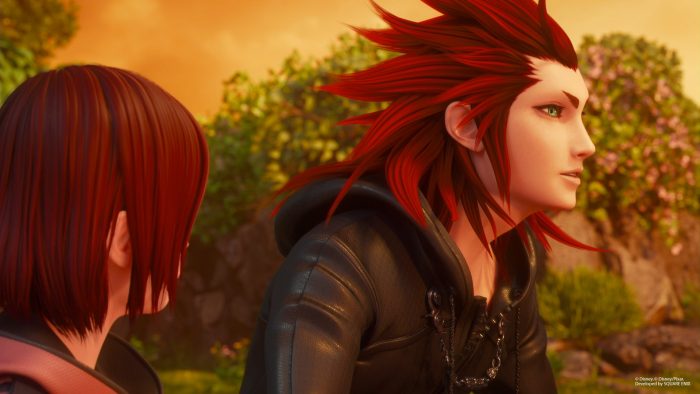
Kingdom Hearts III had a lot to live up to, considering the sheer number of dangling plot threads it had to tie up. The fates of several characters and the conclusion to the Dark Seeker saga hung in the balance, and while whether or not the game succeeded in this endeavor is up for debate, I was really taken with the long-awaited reunions of my favorite anime children.
Take the Twilight Trio of Roxas, Axel, and Xion. Xion is one of Kingdom Hearts’ most tragic characters, and I was pleased she got to be with her friends again. The scene where Roxas and Xion share a tearful embrace while Axel tries to crack wise about how he should have brought the duo some ice cream before his voice cracks and he rushes to hold them both in his arms is such a sweet, heartfelt moment. Ditto for the reunion of the Wayfinder trio, consisting of Ventus, Aqua, and Terra. Aqua’s escape from her decade-long stint in the Realm of Darkness, Ventus’ awakening from his repose in Castle Oblivion, and Terra coming to his senses and beating the ever-loving crap out of his stolen body are all immensely satisfying scenes.
Kingdom Hearts III was spinning a lot of plates, and some of them broke. The plot has many anticlimactic or confusing turnarounds, particularly Xehanort’s ultimate fate. Still, when I look back on my initial playthrough of the title, it’s the smiling and tearful faces of the Twilight and Wayfinder trios that I remember the most.
The Legend of Dragoon – Lavitz
By Sam-James Gordon
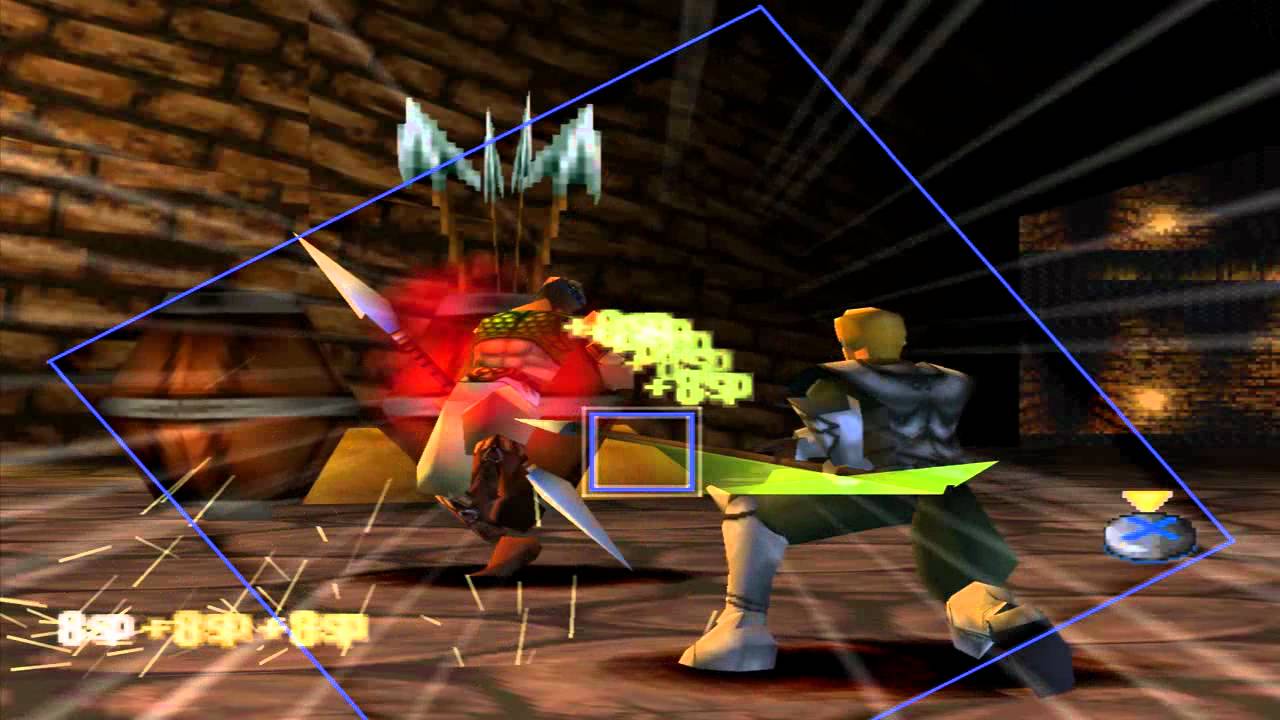
The blueprint for the “bestie bro” character trope is very established, and these characters often become fan favourites. Think Yosuke from Persona 4 or Erik from Dragon Quest XI. Erik even has his own game now! Back in the nineties, however, the trope was still relatively fresh. It was arguably more popular back then for male characters to bond through rivalry than genuine friendship. Cecil and Kain from Final Fantasy IV are a great example of this, and these dynamics of angst and edginess were generally the trend at the time. In a move that was almost definitely conscientious of this, along came The Legend of Dragoon to remind everyone that two men can simply just be best friends. Before tearing up our emotions and spitting them back out, that is.
Developers didn’t really shy away from killing off characters in past console generations: Final Fantasy V and Final Fantasy VII did it, as well as other games like Grandia. Lavitz stands out to me because of his relationship with the main character, Dart; they’d seen war, imprisonment, hope, and freedom together. During their downtime, Dart visits Lavitz’s house with him. You can even find a key item called the Portrait of Lavitz, as if to forever anchor your emotional bond with this character to your inventory. Of course, anyone who’s played the game sees where this is going. Spoiler alert, Lavitz croaks. In a successful attempt to free his king from the mysterious Lloyd, Lavitz ends up passing away in the arms of Dart. Honestly, looking at it through the eyes of an adult, it’s easy to draw comparisons to the “they were just roommates” meme, but even in its purest form, it’s a lovely scene that rejects toxic masculinity. King Albert is even shirtless! I digress.
Some games have used a character’s death purely for an emotional reaction while never using the character to their full potential — Lunafreya, I’m looking at you. The Legend of Dragoon did Lavitz and his death justice, and the narrative holds up nearly 25 years later.
Legend of Mana – The Dudbear Manual
by Greg Delmage
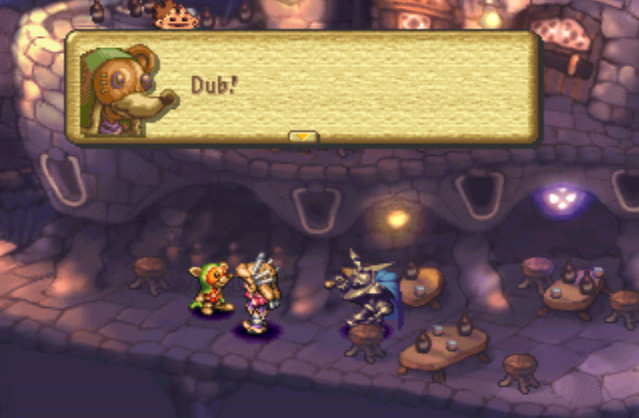
The Mana series has always held a special place in my heart since I played the first entry on the SNES, introducing me to my love for RPGs. I spent a lot of time with a multitap and a couple of friends adventuring through the countryside fighting rabites. But after Secret of Mana, there weren’t any other games in that world for me to play until Squaresoft finally brought a new game overseas to the PlayStation in 2000.
But I didn’t regularly peruse gaming magazines or websites back then and was unaware a new entry was coming. So back when Blockbusters were still a thing, I stumbled upon Legend of Mana gracing the shelves and was pleasantly surprised that I could enjoy more of what I love. I rented it immediately and spent the weekend running about Fa’Diel, delighting in the visual splendour, incredible soundtrack, fun action gameplay, and quirky world. It wasn’t quite the same as the SNES classic, but it was still so much fun. In one of the quests, I met the Dudbears in Lumina and had to sell them some lamps even though I couldn’t speak the language. I struggled to remember the difference between “Dub” and “Du babba?” until I found a solution: for the first time in my gaming career, I found a use for the notes section in the manual! After that fateful weekend, I had to have more and bought it for myself.
Months later, when summer was over and a new semester had begun, a friend and I somehow got onto the subject of the game in art class. It turned out she and her boyfriend had also rented it over the summer. We both loved it, and I mentioned how I had to write down the Dudbear language to remember it, and she was like, “Oh my God! That was you!? We saw that, and it saved our asses!” It’s a silly, small thing, but it’s one of the main reasons I think fondly of Legend of Mana.

